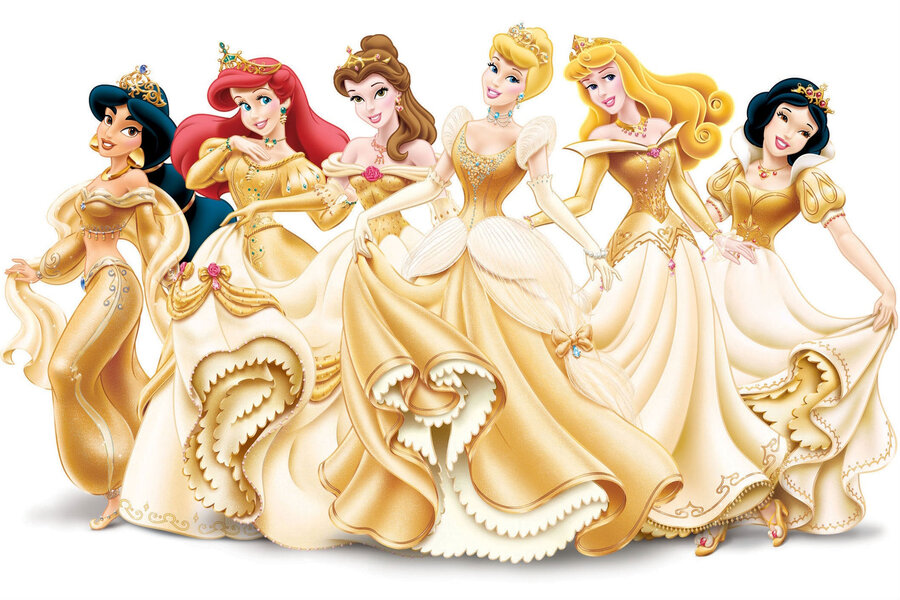The Disney Princess divide: The next mommy wars?
Loading...
So, what do you think about the Disney Princess phenomena?
We ask, because according to Rebecca Hains, an author and academic who is working on a book about princess culture in America, the “princess wars” may well be the “mommy wars” of the 2010s.
Haven’t heard those terms before?
“Mommy wars” is a phrase that started to get a lot of attention in the mid 2000s, and described the tension between stay-at-home moms and mothers who went back into the workforce. According to the mommy wars concept, American women are really judgmental about how others manage the career-parenting balance. The stay-at-home moms think the working moms are abandoning their kids, or at the very least missing out on what matters in life. The career moms think that the stay-at-homes are anti-feminist and, well, boring.
That’s the theory, at least.
There are some critics who think the mommy wars phenomena was media driven, and that mothers tend to be far more supportive of each other than divisive. These critics believe the whole mommy wars concept is passé, a relic of the Brangelina, pre-YouTube era.
Indeed, take a tour through the world of parenting websites and mommy blogs today, and people seem to be bending over backwards to show their acceptance of anyone who is just trying to figure out this crazy, overwhelming, joyful, exhausting thing called motherhood.
When it comes to princesses, though, the gloves come off.
Over the past couple of years, there has been a growing number of written critiques of Disney princesses. (For the uninitiated, the "Disney Princess" is Disney’s brilliant marketing idea to combine all of their fairy tale leading ladies, from old school Cinderella, Belle, and Snow White to the more modern Jasmine and Tiana, into one pastel-colored collective.)
Skeptics see the ladies as limiting girls’ play, focusing attention on appearance, and training girls to be little consumers rather than little people with their own creativity. Last year journalist Peggy Orenstein pushed the debate mainstream with her book “Cinderella Ate My Daughter,” connecting the Disney Princess pretty-in-pink phenomena to early sexualization of girls. (We wrote about the same in our piece, “Little Girls or Little Women? The Disney Princess effect.”)
A lot of these princess detractor moms wonder how on earth other mothers don’t see the problem with steering their girls into this cotton candy world of waiting for the prince. As the blog Cinematica put it: “Snow White’s hormones almost kill her, Aurora is married off in the crib for politics and saved years later with a kiss (or sex and slavery when Anne Rice has her say), Jasmine is a pretty girl saved by a street rat, Ariel gets to look pretty and say nothing, Belle works her sexuality, and Cinderella is saved because of her beauty.”
Yikes, right?
But on the other side, along with the princess detractors have come princess defenders. A slew of the Disney faithful have taken to the blogosphere, pointing out that princesses are sweet, nice, like to read (Belle), work without complaining (Cinderella) and actually pretty spunky if you look closely. (Doesn’t Pocahantas stop a murder?)
“They are good people,” wrote one blogger. “Name one mean thing that any of the Disney princesses say, ever. It isn’t possible, because they’re all incredibly kind, even-tempered, and accepting. Shouldn’t kindness be a trait to aspire to?”
Others are a bit more touchy; some say they feel the need to fight back against yet another feminist attack.
“Please, stop underestimating the ability of our future women to tell the difference between fantasy and reality,” another blogger wrote. “The girls are fine. If they want a pretty little doll in a fancy dress, then allow them their joy. They’ll make the right choice when it really matters.”
One of the reasons the debate has become intense, Ms. Hains says, is that Disney princesses are just everywhere. Much of the $4 billion Disney princess empire (yes, billion) is based on an amazing amount of branding. The princesses are on coloring books and winter coats and cereal boxes and bedspreads; they are on plant seed packets and television shows and rain boots. Hains says she even saw Disney princess-branded grapes.
The princesses are so overwhelmingly everywhere that some academics say they have managed to become synonymous with girlhood itself – a phenomena Hains calls “lifestyle branding,” which is when a particular brand becomes so embedded into all aspects of a consumer’s life that it shapes her very identity.
So when a little girl throws a fit because her father is trying to get her to wear a sweater – and princesses don’t wear sweaters!!! – it’s because dad is trying to get her to do something that goes against everything she believes she is. Which is why parents are so interested in the phenomena – in a lot of ways, Disney Princesses are defining their girls’ lives.
To critics, this is sinister – a prime example of manipulative marketing to children, good for Disney’s bottom line and not much else. To the princess faithful, though, this “I will not take off my Little Mermaid outfit” phase is just that – a phase. It’s at worst an annoyance, and, more likely, a sweet, pretty-in-pink part of growing up.
What do you think? Are you pro or anti? Or do you think that, like the mommy wars, this division is overblown?





